Indigenous nations tell their own stories about the origins of the world and their place in it; all claim their ancestry dates to Time Immemorial. At the same time, there is considerable archeological debate about when humans first came to North America, though broad assumptions suggest waves of migration from northeastern Asia, by both land bridge and boat, between 30,000 and 13,500 years ago. Note: This timeline presents key events and developments in Indigenous history in what is now Canada, from Time Immemorial to present. While no timeline can be exhaustive in its coverage, it provides a broad chronological overview to support educators and students.
Indigenous Peoples
Indigenous nations tell their own stories about the origins of the world and their place in it; all claim their ancestry dates to Time Immemorial. At the same time, there is considerable archeological debate about when humans first came to North America, though broad assumptions suggest waves of migration from northeastern Asia, by both land bridge and boat, between 30,000 and 13,500 years ago. Note: This timeline presents key events and developments in Indigenous history in what is now Canada, from Time Immemorial to present. While no timeline can be exhaustive in its coverage, it provides a broad chronological overview to support educators and students.
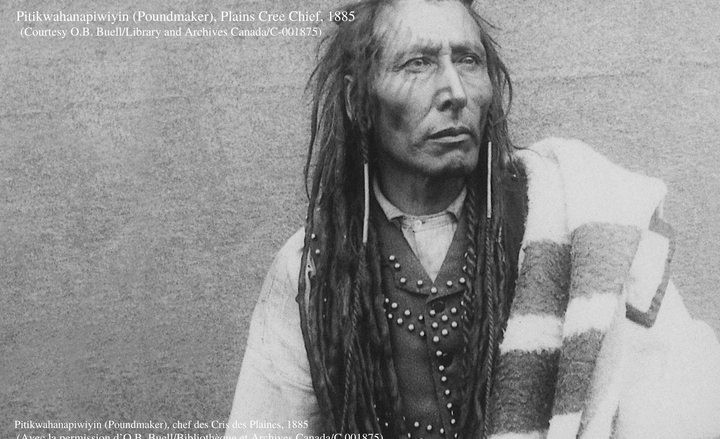
NOVEMBER 30, -1
ARCHEOLOGICAL DISCOVERIES
Evidence of Human Occupation in North America
Irrefutable archeological evidence of human occupation in the northern half of North America, including in the Tanana River Valley (Alaska), Haida Gwaii (British Columbia), Vermilion Lakes (Alberta), and Debert (Nova Scotia).
JANUARY 01, 1400
INDIGENOUS PEOPLES POLITICAL ORGANIZATION AND ACTIVISM SELF-GOVERNMENT
Mi’kmaq Grand Council
Made up of male representatives from across Mi’kmaq territory, the council is governed by a grand chief and rules by consensus. The role of chieftain is often handed down from father to son. (Note: The exact date of this event is unknown. The date provided here is an estimate.)
JANUARY 01, 1400
INDIGENOUS PEOPLES POLITICAL ORGANIZATION AND ACTIVISM SELF-GOVERNMENT
Blackfoot Confederacy
A confederacy of Siksika (Blackfoot) nations is organized around bands. Each band has a male leader responsible for decision-making. He governs by consensus. (Note: The exact date of this event is unknown. The date provided here is an estimate.)
JANUARY 01, 1450
INDIGENOUS PEOPLES
Haudenosaunee Confederacy Try Resolving Disputes in Lower Great Lakes Region
The Haudenosaunee Confederacy (Iroquois League), organized by Dekanahwideh (the Peacemaker) and Hiawatha, tries to provide a peaceful and equitable means to resolve disputes among member nations in the lower Great Lakes region.
JANUARY 01, 1493
LAW
“Doctrine of Discovery” is Decreed
The papal bull Inter Caetera — the “Doctrine of Discovery” — is decreed a year after Christopher Columbus’ first voyage to America. Made without consulting Indigenous populations nor with any recognition of their rights, it is the means by which Europeans claim legal title to the “new world.”
JANUARY 01, 1500

FIRST NATIONS INDIGENOUS PEOPLES POLITICAL ORGANIZATION AND ACTIVISM SELF-GOVERNMENT
The Haudenosaunee (Iroquois) Confederacy is Active
Formed by five nations, the Haudenosaunee Confederacy is considered one of the earliest examples of a participatory democracy. (Note: The exact date of this event is unknown. The date provided here is an estimate.)
JANUARY 01, 1500
INDIGENOUS PEOPLES
Indigenous Population Ranges From 200,000 to 500,000
Estimates for the Indigenous population range from 200,000 to 500,000 people, though some suggest it was as high as 2.5 million, with between 300 and 450 languages spoken.
JANUARY 01, 1500
INDIGENOUS PEOPLES
Contact between European fisherman and Indigenous Peoples on Atlantic Coast Begins
Continual contact between European fishermen and Indigenous peoples on the Atlantic coast begins.
JANUARY 01, 1500

FIRST NATIONS INDIGENOUS PEOPLES POLITICAL ORGANIZATION AND ACTIVISM SELF-GOVERNMENT
Huron-Wendat Village Councils
Civil and war-related affairs among the Huron-Wendat are determined by respective village councils. Decisions are reached by consensus. All men over 30 are council members but women have little-to-no say in council affairs. (Note: The exact date of this event is unknown. The date provided here is an estimate.)
JUNE 02, 1537
INDIGENOUS PEOPLES
Pope's Proclamation on Indigenous People
Pope Paul III proclaimed that Indigenous people "are truly human" and so should not be enslaved, and that they should receive the Roman Catholic faith. (See also Enslavement of Indigenous Peoples in Canada.)
JANUARY 01, 1600
INDIGENOUS PEOPLES
Trade Alliances Between Indigenous Peoples and Europeans Form
Indigenous technology and knowledge of hunting, trapping, guiding, food, and disease prove crucial to the survival of Europeans and early colonial economy and society, particularly in the supply of beaver pelts and other furs. The establishment of alliances gives Indigenous peoples access to European weaponry and other goods.
JANUARY 01, 1600
INDIGENOUS PEOPLES
Disease Devastates Indigenous Populations
Tuberculosis, smallpox, and measles spread, intentionally or inadvertently, across North America, devastating Indigenous populations.
JUNE 28, 1609
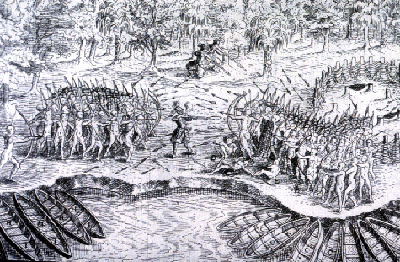
INDIGENOUS PEOPLES
Champlain Explores Haudenosaunee Country
Samuel de Champlain explored Haudenosaunee country, entering the Rivière des Iroquois (Richelieu), paddling upriver and reaching a great lake that would later bear his name.
JULY 30, 1609

INDIGENOUS PEOPLES
Champlain Battles the Haudenosaunee
Champlain and his First Nations allies battled the Haudenosaunee on Lake Champlain, beginning 150 years of war between Iroquois and French. Champlain's musket kills three and astonishes the enemy.
JANUARY 01, 1613
INDIGENOUS PEOPLES
Covenant Chain Agreements Established
The Two-Row Wampum (Kaswentha) establishes the Covenant Chain, a series of agreements between the Haudenosaunee Confederacy and European representatives. They agree to work toward peace as well as economic, political, and cultural sovereignty; gift exchanges honour promises and renew alliances.
OCTOBER 11, 1615

INDIGENOUS PEOPLES
Champlain's Third Battle with the Haudenosaunee
Champlain and his allies arrived at a Haudenosaunee fort on Lake Onanadaga, just north of present-day Syracuse. The Haudenosaunee routed the invaders, wounding Champlain with two arrows.
OCTOBER 11, 1615

INDIGENOUS PEOPLES
Champlain Wounded
Samuel de Champlain was wounded twice in the leg by arrows when he and his Huron-Wendat allies stumbled upon an Haudenosaunee fort.
MARCH 16, 1649
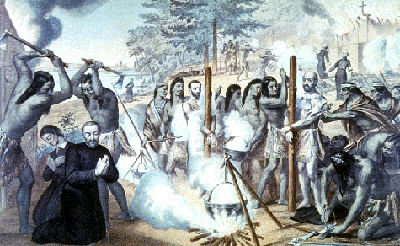
INDIGENOUS PEOPLES
Jesuits Killed
Jesuit missionaries Jean de Brébeuf and Charles Lalemant were executed by the Haudenosaunee.
APRIL 17, 1649

INDIGENOUS PEOPLES
Wendake Defeated by Haudenosaunee
Weakened by disease and cultural interference by the French, the Huron-Wendat homeland known as Wendake was destroyed by the Haudenosaunee (Iroquois). Between 1649 and 1650, about 500 Huron-Wendat left Georgian Bay to seek refuge close to the French, in the Quebec City region. Many were either killed or adopted into Haudenosaunee nations. However, the Huron-Wendat First Nation still remains — in Wendake, Quebec.
MAY 02, 1660

INDIGENOUS PEOPLES
Dollard and the Haudenosaunee
Adam Dollard des Ormeaux, with 16 Frenchmen and 44 Huron-Wendats and Algonquins, held a Haudenosaunee war party at bay for days before capitulating; all the French defenders were killed.
MAY 02, 1670
INDIGENOUS PEOPLES
Hudson’s Bay Company is Established
The Hudson’s Bay Company is established, forming a monopoly and increasing the volume of goods in the fur trade. For centuries to come, blankets are widely traded, including the iconic HBC Point Blanket, first made in 1779 and still available today. Seen by some as an item of cultural importance, it reminds others of the forces of colonialism.
JANUARY 01, 1677
INDIGENOUS PEOPLES
Silver Covenant Chain Treaty
This wampum treaty between Britain and the Haudenosaunee represented an open and honest communication between two peoples. Subsequent wampum treaties reinforce this idea, as well as the idea of mutual interest and peace. Such wampum treaties oblige the parties to help each other, in war if necessary, should they be asked.
AUGUST 05, 1689
INDIGENOUS PEOPLES
Lachine Raid
Lachine was attacked by 1,500 Haudenosaunee in the fiercest assault in the history of the colony; 24 French colonists were killed, and 42 of 90 prisoners never returned.
JANUARY 22, 1690

INDIGENOUS PEOPLES
Haudenosaunee (Iroquois) Peace Treaty
The Haudenosaunee concluded a peace treaty with the English and the tribes of the Great Lakes.
AUGUST 01, 1701
INDIGENOUS PEOPLES
Great Peace of Montreal
Three dozen Indigenous groups and the French colonial government sign the Great Peace of Montréal, forging peaceful relations that end nearly a century of war between the Haudenosaunee and the French (and their Indigenous allies).
MAY 01, 1756
INDIGENOUS PEOPLES
Seven Years' War Begins
The Seven Years’ War is the first global war, fought in Europe, India, America, and at sea. In North America, Britain and France (aided by Indigenous allies) struggled for supremacy. With the Treaty of Paris, France formally cedes Canada to the British.
SEPTEMBER 05, 1760
INDIGENOUS PEOPLES
Huron Treaty
A treaty was concluded between the Huron-Wendat and the British. The Huron-Wendat agreed to put down their arms. In return they would receive safe passage, free exercise of religion, local government and justice. The treaty was recognized in 1990 by the Supreme Court.
SEPTEMBER 15, 1760
INDIGENOUS PEOPLES
Treaty of Oswegatchie
The terms of the Treaty of Oswegatchie, confirmed at Kahnawake, were for the Haudenosaunee to remain neutral. In return they would not be deprived of their lands or treated as enemies by the British.
MAY 09, 1763
INDIGENOUS PEOPLES
Pontiac's War
Pontiac’s Resistance provides a strong show of Indigenous unity. Under the leadership of Ottawa chief Obwandiyag (Pontiac), an Indigenous alliance tries to resist European occupation by ridding the lower Great Lakes region of English settlers and soldiers.
OCTOBER 07, 1763
LAW
King George III's Royal Proclamation
The Royal Proclamation of 1763 lays down the basis for how colonial administration would interact with First Nations peoples in the centuries that followed. The Proclamation guarantees certain rights and protections for First Nations peoples, and establishes the process by which the government could acquire their lands. It also provides guidelines for negotiating treaties on a nation-to-nation basis.
JULY 24, 1766

INDIGENOUS PEOPLES
Pontiac's Treaty
Ottawa chief Pontiac signed a treaty with the British ending the uprising he initiated three years earlier. The treaty helped to establish Indigenous rights for the future.
APRIL 20, 1769

INDIGENOUS PEOPLES
Pontiac's Murder
Pontiac was murdered at the site of present-day St Louis, Missouri.
SEPTEMBER 07, 1783

INDIGENOUS PEOPLES
Brant Tries to Forge Alliance
Joseph Brant spoke to an Indigenous council at Lower Sandusky, Ohio, attended by Shawnees, Cherokees and others to unite them with the Six Nations and to encourage them to speak with "the United Voice of us all."
OCTOBER 25, 1784
LAW
Haldimand Proclamation
The Haldimand Proclamation grants land, negotiated nine years earlier by Thayendanegea (Joseph Brant), to the Haudenosaunee Confederacy in return for helping Britain during the American Revolution.
JANUARY 01, 1791
INDIGENOUS PEOPLES
Haida Chief Koyah Organizes First Attacks on the British
Haida chief Koyah organizes the first of many attacks on the British, who had begun coastal explorations in an emergent west coast fur trade.
NOVEMBER 07, 1811
INDIGENOUS PEOPLES
The Battle of Tippecanoe
William Henry Harrison, governor of the Indiana Territory, attacked Tecumseh's Western Confederacy at the Shawnee village of Prophetstown, Indiana. Angered, Tecumseh entered an alliance with Britain as a means to counter American expansion into their lands.
JUNE 18, 1812
INDIGENOUS PEOPLES
War of 1812 Begins
The War of 1812 sees tens of thousands of Indigenous people fight for their land, independence, and culture, as allies of either Great Britain or the United States. In British North America, the Western Confederacy, led by Tecumseh and Tenskwatawa, plays a crucial role in protecting Upper and Lower Canada from American invasion. By the end of hostilities, almost 10,000 Indigenous people had died from wounds or disease. The Treaty of Ghent, which is supposed to return lands and “all possessions, rights and privileges” to Indigenous peoples affected by the war, is ignored.
DECEMBER 24, 1814
INDIGENOUS PEOPLES
Treaty of Ghent
Peace talks between Great Britain and the United States took place in Belgium in August and ended with the signing of the Treaty of Ghent on Christmas Eve. The British insisted the treaty be ratified by both governments before it took effect because the Americans refused to ratify three previous treaties.
FEBRUARY 15, 1815
INDIGENOUS PEOPLES
War of 1812 Ends
The War of 1812 ends with the peace Treaty of Ghent. However, the First Nations allies of the British and Canadian cause suffered; they lost warriors (including the great Tecumseh), lost hope of halting American expansion in the west, and their contributions were quickly forgotten by their allies.
JUNE 06, 1829

INDIGENOUS PEOPLES
Last Beothuk Dies
Shawnadithit was captured by English furriers in 1823, and her drawings and descriptions of the Beothuk are valuable records of her people. Like so many Beothuk, she died of tuberculosis.
JANUARY 01, 1831

INDIGENOUS PEOPLES
Mohawk Institute Begins to Accept Boarders
Run by the Anglican Church, the Mohawk Institute in Brantford, Upper Canada [Ontario], becomes the first school in Canada’s residential school system. At first, the school only admits boys. In 1834, girls are admitted.
JUNE 24, 1837

INDIGENOUS PEOPLES
Smallpox Hits Prairies
An American Fur Company boat arrived at Fort Union, setting off a smallpox epidemic across the praries, killing an estimated three-quarters of the Blackfoot, Blood, Peigan, Sarcee and Assiniboine peoples of the prairies.
MARCH 20, 1845
INDIGENOUS PEOPLES
Bagot Report
The Bagot Commission (1842-1844) report is presented to the Legislative Assembly. It proposes that separating Indigenous children from their parents is the best way to assimilate them into Euro-Canadian culture. The commission also recommends that the Mohawk Institute be considered a model for other industrial schools.
FEBRUARY 07, 1850
INDIGENOUS PEOPLES
Mica Bay Inquiry
The inquiry into the attack at Mica Bay, Quebec began with the testimony of agent John Bonner of the Quebec Mining Company. The Mica Bay Incident occurred in November 1849 when First Nations and Métis people, led by white businessman Allan Macdonell, attacked the company's mining installations in a dispute over mining rights in the area.
SEPTEMBER 07, 1850
LAW
Robinson Treaties
The Robinson-Superior and Robinson-Huron treaties are signed in what is now Ontario, as are the Douglas treaties in what is now British Columbia. The controversial agreements allow for the exploitation of natural resources on vast swaths of land in return for annual cash payments, and make evident the differing understandings of land ownership and relationship-building through treaties.
JANUARY 01, 1857
INDIGENOUS PEOPLES
Gradual Civilization Act Passed in the Province of Canada
The government attempts to assimilate First Nations men by offering them the right to vote if they voluntarily enfranchise. This means giving up rights, including treaty rights. Only one person elects to do so under this Act. (See also Indigenous Peoples in Canadian Law.)
JUNE 10, 1857
INDIGENOUS PEOPLES
The Gradual Civilization Act
The Gradual Civilization Act requires male Status Indians and Métis over the age of 21 to read, write and speak either English or French, and to choose a government-approved surname. It awards 50 acres of land to any “sufficiently advanced” Indigenous male, and in return removes any tribal affiliation or treaty rights.
APRIL 30, 1864
INDIGENOUS PEOPLES
Tsilhqot'in Incident
In 1861, a pack-train trail was established from the Bella Coola Valley through Tsilhqot'in territory to the developing gold mine centres to the east, and work was begun on a wagon road from Bute Inlet to the interior. Resisting these intrusions, a small group of Tsilhqot'in killed several workers on this road in what is known as the Chilcotin War of 1864. Six Tsilhqot'in were eventually tried and executed for these killings. On 26 March 2018, Prime Minister Justin Trudeau exonerated the Tsilhqot'in chiefs of any wrongdoing, and on 2 November 2018, Trudeau formally apologized.
MARCH 29, 1867
INDIGENOUS PEOPLES
Federal Responsibility
Under the Constitution Act (British North America Act), the federal government takes authority over First Nations and land reserved for First Nations (see Reserves). This authority would later extend to education of Status Indians.
NOVEMBER 02, 1869

POLITICAL ORGANIZATION AND ACTIVISM
Red River Resistance
With 120 men,Louis Riel occupied Upper Fort Garry in the Red River Colony to block the transfer of Rupert’s Land from the Hudson’s Bay Company (HBC) to Canada. Known as the Red River Resistance, the Métis — led by Riel — and First Nations allies defended the Red River Colony from White settlers and government encroachment on their lands. Louis Riel was hanged for treason, and Cree chiefs Mistahimaskwa (Big Bear) and Pitikwahanapiwiyin (Poundmaker) were imprisoned. Promises to protect the Métis were still unfulfilled more than a decade later, sparking the Northwest Resistance in 1885. In 2019, Poundmaker was exonerated by the federal government.
AUGUST 03, 1871
FIRST NATIONS LAW
Numbered Treaties Signed
The 11 Numbered Treaties are signed by the Canadian government and Indigenous nations. These treaties, still controversial and contested today, make vast areas of traditional Indigenous territory available for white settlement and development in exchange for a system of reserves (treaty lands), cash payments, access to agricultural tools, and hunting and fishing rights. Elders note that the initial spirit and intent of the treaties have been disregarded.
AUGUST 03, 1871
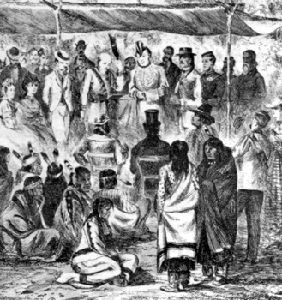
INDIGENOUS PEOPLES
Treaty 1
The first post-Confederation treaty was signed at Lower Fort Garry, Man. The first of many “Numbered Treaties,” Treaty 1 was signed between the Crown and the Ojibwe and Swampy Cree Nations. The treaty included the provision of livestock, agricultural equipment and the establishment of schools in exchange for ceding large tracts of Indigenous hunting grounds.
AUGUST 21, 1871
INDIGENOUS PEOPLES
Treaty 2
Treaty 2 was concluded with Chippewa of Manitoba, who ceded land from the mouth of Winnipeg River to the northern shores of Lake Manitoba across the Assiniboine River to the United States frontier.
JUNE 01, 1873

INDIGENOUS PEOPLES
Cypress Hills Massacre
A gang of wolf hunters looking for a stolen horse killed 20 Assiniboine camped in the Cypress Hills. Some of the attackers were tried but none convicted. The event sped up the arrival of police.
OCTOBER 03, 1873
INDIGENOUS PEOPLES
Treaty 3
Treaty 3 was signed by the Saulteaux (Chippewa) of northwestern Ontario and of Manitoba. For the surrender of a tract comprising about 55,000 sq. miles, the Dominion Government reserved not more than one square mile for each family of five and agreed to pay $12 per head and an annuity of $5 per head.
SEPTEMBER 15, 1874
INDIGENOUS PEOPLES
Treaty 4
Treaty 4 was signed at Fort Qu'Appelle, Saskatchewan, with Cree, Saulteaux (Chippewa) and other First Nations.
SEPTEMBER 20, 1875
INDIGENOUS PEOPLES
Treaty 5
Treaty 5 was concluded at Lake Winnipeg ceding an area of approximately 100,000 sq. miles inhabited by Chippewa and Swampy Cree (Maskegon) of Manitoba and Ontario.
APRIL 12, 1876

FIRST NATIONS INDIGENOUS PEOPLES LAW
Indian Act
The Indian Act is introduced. The Act aims to eradicate First Nations culture in favour of assimilation into Euro-Canadian society. The Act also reinforces that Status Indians must voluntarily give up status and treaty rights to vote federally. Status Indian women are barred from voting in band council elections.
AUGUST 23, 1876
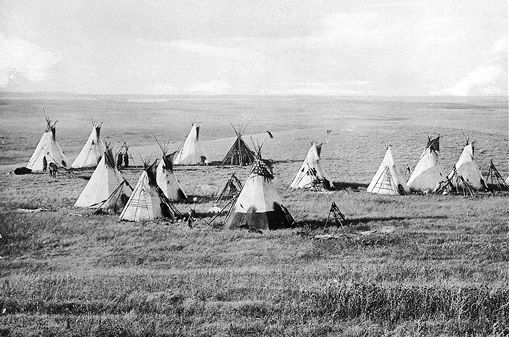
INDIGENOUS PEOPLES
Treaty 6
Treaty 6 was signed at Carlton and at Fort Pitt with the Plains Cree, Woodland Cree and Assiniboine. It ceded an area of 120,000 sq. miles of the plains of Saskatchewan and Alberta.
SEPTEMBER 16, 1877
INDIGENOUS PEOPLES
Plains Indigenous Negotiations
Canadian government officials met with Crowfoot and his fellow chiefs to discuss the future of Indigenous peoples on the Plains. After some disagreements among the Indigenous groups, Red Crow said he would sign a treaty if Crowfoot would. Crowfoot agreed.
SEPTEMBER 22, 1877

INDIGENOUS PEOPLES
Treaty 7
Treaty 7 was signed at Blackfoot Crossing in southern Alberta by the Siksika, Kainai, Piikani, Tsuut'ina and Stoney. Canadian officials understood that by the treaty First Nations surrendered some 35,000 sq miles of land to the Crown in return for reserves, payments and annuities.
JANUARY 01, 1880
INDIGENOUS PEOPLES LAW
Amendment to the Indian Act (1880)
An amendment to the Indian Act formally disenfranchises and disempowers Indigenous women by declaring they “cease to be an Indian in any respect” if they marry “any other than an Indian, or a non-treaty Indian.”
JULY 01, 1883
INDIGENOUS PEOPLES
Residential Schools Authorized
Based on the recommendations of the Davin Report, Sir John A. Macdonald authorizes the creation of the residential school system, designed to isolate Indigenous children from their families and cut all ties to their culture.
APRIL 19, 1884
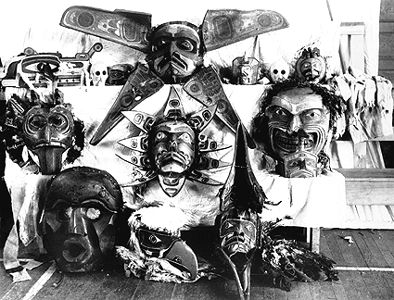
INDIGENOUS PEOPLES
Potlatch and Tamanawas Banned
The federal government outlaws the potlatch ceremony and Tamanawas winter dances of Indigenous peoples in British Columbia, bowing to pressure from missionaries.
APRIL 19, 1884
.jpg)
INDIGENOUS PEOPLES
Creation of Residential Schools
Amendments to the Indian Act of 1876 provide for the creation of residential schools, funded and operated by the Government of Canada and Roman Catholic, Anglican, Methodist, Presbyterian and United churches.
SEPTEMBER 15, 1884
INDIGENOUS PEOPLES
Canada's Nile Voyageurs
The Nile Voyageurs, Canada's first official participants in an overseas war, set sail for Egypt, comprising a force of 386 lumbermen, Caughnawaga men and Ottawa boatmen under the command of F.C. Denison.
JANUARY 01, 1885
INDIGENOUS PEOPLES LAW
Electoral Franchise Act
The original draft of the Act gave federal voting rights to some women, but under the final legislation, only men can vote. The Act gives some Reserve First Nations with property qualifications the right to vote, but bars Chinese Canadians.
APRIL 02, 1885
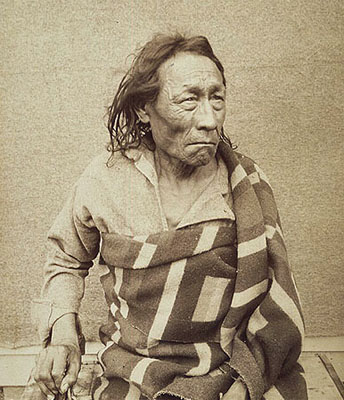
INDIGENOUS PEOPLES
Frog Lake Incident
Wandering Spirit and other Cree in Chief Big Bear's band killed nine white men at Frog Lake, Sask, during the North-West Resistance.
JULY 02, 1885

INDIGENOUS PEOPLES
Big Bear Surrenders
Big Bear (Mistahimaskwa) surrendered at Fort Carlton. Though always counselling peace, he was sentenced to three years in prison.
JANUARY 01, 1889
INDIGENOUS PEOPLES
Peasant Farm Policy Introduced
From 1889 to 1897, the Canadian government’s Peasant Farm Policy set limits on Indigenous agriculture on the Prairies. The policy included rules about the types of tools First Nations farmers could use on reserve lands. It also restricted how much they grew and what they could sell. The policy impeded the growth and development of First Nations farms and reduced their ability to compete with settler farms on the open market.
APRIL 25, 1890

INDIGENOUS PEOPLES
Death of Crowfoot
The great Cree chief Crowfoot died at Blackfoot Crossing. He was a perceptive, farseeing and diplomatic leader who became disillusioned with the Canadian government.
DECEMBER 15, 1890

INDIGENOUS PEOPLES
Death of Sitting Bull
Hunkpapa Lakota Sioux warrior and chief Tatanka Iyotake, also known as Sitting Bull, died at Standing Rock, South Dakota. Sitting Bull was a leader in indigenous resistance against American westward expansion. He and his people sought refuge in Canada, but left when the Canadian government refused to establish a reserve for them. Sitting Bull was killed during a gunfight with American authorities trying to execute a warrant for his arrest.
JANUARY 01, 1896
INDIGENOUS PEOPLES
Growing Number of Residential Schools
The number of schools across Canada quickly climbs to over forty. Each school was provided with an allowance per student, which led to overcrowding and an increase in illnesses within the institutions.
JUNE 21, 1899

INDIGENOUS PEOPLES
Treaty 8
Cree, Beaver, Chipewyan and Slavey First Nations ceded territory south and west of Great Slave Lake in northern Alberta to the federal government in Treaty 8.
JULY 03, 1906
INDIGENOUS PEOPLES
Chief Capilano Meets King Edward VII
Chief Joe Capilano of the Squamish Nation went to London to meet King Edward VII and Queen Alexandra. The chief, accompanied by other Indigenous representatives, presented a petition to the king concerning Indigenous land rights.
NOVEMBER 15, 1907
INDIGENOUS PEOPLES
Health at Residential Schools
After visiting 35 residential schools, Dr. Peter Henderson Bryce, chief medical officer for Canada’s Department of the Interior and Indian Affairs (1904–21), reveals that Indigenous children are dying at alarming rates – with the mortality rate of enrolled students as high as 25 per cent. This number climbs to 69 per cent after students leave school.
MARCH 10, 1910

INDIGENOUS PEOPLES
Death of S7ápelek (Chief Joe Capilano)
S7ápelek, also known as Chief Joe Capilano, was a Squamish Nation member and one of the most influential Indigenous leaders in British Columbia. Beginning in the late 19th century, S7ápelek became better known as Chief Joe Capilano and spent the rest of his life advocating for Canada’s recognition of Indigenous rights.
MARCH 08, 1914
INDIGENOUS PEOPLES
Birth of Lacrosse Superstar Bill Isaacs
Wilton “Bill” Isaacs was born in the Six Nations of the Grand River First Nation. He became one of Canada’s most outstanding lacrosse players. Isaacs was a superstar of box lacrosse, the indoor version of the game, which was extremely popular in the 1930s and 1940s.
AUGUST 04, 1914
INDIGENOUS PEOPLES
First World War Begins
Between 4,000 and 6,000 Indigenous people serve in the Canadian military during the First World War. They are denied veterans’ benefits on their return, despite many winning military awards, like Francis Pegahmagabow, whose medals are pictured above.
MAY 24, 1918
LAW
Women Granted Right to Vote in Federal Elections
Many Canadian women are granted the right to vote in federal elections, but First Nations women can only vote if they give up their status and treaty rights.
DECEMBER 01, 1918
POLITICAL ORGANIZATION AND ACTIVISM
Fred Loft Forms the League of Indians
The League of Indians forms to advocate for improved living conditions and the protection of Indigenous rights and practices. Though its effectiveness is weakened by government harassment, police surveillance, and disunity among Indigenous groups, it forms the basis for Indigenous political organizing in the future.
FEBRUARY 26, 1920
INDIGENOUS PEOPLES
Indian Act Amendment Allows for Forced Enfranchisement of Status Indians
The Indian Act is amended to allow for the forced enfranchisement of First Nations whom the government thought should be removed from band lists. Enfranchisement was the most common of the legal processes by which First Nations peoples lost their Indian Status under the Indian Act.
APRIL 01, 1920
INDIGENOUS PEOPLES
Residential Schools Become Mandatory
Deputy Superintendent General of Indian Affairs, Duncan Campbell Scott, makes attendance at residential school mandatory for every First Nations child between 7 and 16 years of age. This policy was also inconsistently applied to Métis and Inuit children.
JUNE 27, 1921

INDIGENOUS PEOPLES
Indigenous People Cede Mackenzie
Slave, Dogrib, Hare, Loucheux and other bands ceded the Mackenzie River region of the Northwest Territories to the federal government.
JANUARY 01, 1922
INDIGENOUS PEOPLES
The Story of a National Crime Published
Dr. Peter Henderson Bryce publishes The Story of a National Crime, exposing the Canadian government’s suppression of information on the health of Indigenous peoples. Bryce argues that Duncan Campbell Scott and the ministry of Indian Affairs neglected Indigenous health needs and notes a “criminal disregard for the treaty pledges.”
JULY 14, 1923
POLITICAL ORGANIZATION AND ACTIVISM
Cayuga Chief Deskaheh Sails to Geneva
Cayuga Chief Deskaheh (Levi General) campaigns to have the League of Nations recognize the Six Nations of Grand River as a sovereign nation.
JANUARY 01, 1924
FIRST NATIONS INDIGENOUS PEOPLES LAW
Status Indian WWI Veterans Granted Right to Vote
Male Status Indian veterans of the First World War gain the right to vote in federal elections without losing their status and treaty rights.
OCTOBER 03, 1927

INUIT
Birth of Kenojuak Ashevak
Inuk artist Kenojuak Ashevak, who is perhaps the best-known Inuk artist because of her famous print The Enchanted Owl, was born at Ikirasaq camp, South Baffin Island, NWT.
JANUARY 01, 1929
INUIT
Complaints About Inuit Names Begin
Complaints about Inuit not bearing traditional Christian names arise, beginning decades of government labelling strategies to ease the recording of census information and entrench federal authority in the North. Among the failed initiatives are metal discs with ID numbers, and Project Surname.
JANUARY 01, 1930
INDIGENOUS PEOPLES
Residential School Network Expands
More than 80 institutions are in operation across Canada — the most at any one time — with an enrolment of over 17,000.
JANUARY 01, 1934
FIRST NATIONS INUIT LAW
Dominion Franchise Act
Inuit and First Nations persons living on reserves are disqualified from voting in federal elections, except for First Nations veterans who had previously received the vote.
JANUARY 01, 1934
INUIT
Inuit Education Research Conducted by Federal Government
For the first time, the Canadian government conducts research into Inuit education. J. Lorne Turner, Director of Lands, Northwest Territories and Yukon Branch, Department of the Interior urges the government to provide formal education to Inuit children.
JULY 23, 1937
SPORTS
Death of Lacrosse Legend Lance Isaacs
Lance Isaacs and his brothers, Bill and Wade, became some of Canada’s most outstanding lacrosse players. Their father, Man Afraid of the Soap (also Freeman Joseph Isaacs), represented Canada at the 1904 St. Louis Olympic Games on the Mohawk Indians team, which won a bronze medal. The Isaacs became star lacrosse players in both Canada and the United States. Lance died from a stress-related heart attack during a game in 1937.
SEPTEMBER 10, 1939
INDIGENOUS PEOPLES
Second World War Begins
Between 5,000 and 8,000 Indigenous soldiers fight for Canada in the Second World War, serving in all major battles and campaigns. Most do not receive the same support or compensation as other veterans upon returning home.
JANUARY 01, 1944

FIRST NATIONS INDIGENOUS PEOPLES LAW
Status Indian WWII Veterans Granted Right to Vote
Status Indian veterans who served in the Second World War and their spouses are permitted to vote in federal elections without losing status, with some conditions.
JANUARY 01, 1948
INDIGENOUS PEOPLES LAW
Amendments to Dominion Elections Act
Race is no longer grounds for exclusion from voting in federal elections. However, Status Indians still have to give up their Status in order to vote.
JANUARY 01, 1949
FIRST NATIONS LAW
First Nations Win Right to Vote Provincially
Except in Nova Scotia and Newfoundland, Status Indians had been barred from voting provincially. Beginning with British Columbia in 1949 and ending with Quebec in 1969, First Nations peoples gradually win the right to vote in provincial elections without losing status or treaty rights.
JANUARY 01, 1950
INUIT LAW
Inuit Granted Right to Vote
Inuit are granted the right to vote in federal elections, but the isolation of several communities means many cannot access polling stations. Later reforms increase access to ballot boxes.
JANUARY 01, 1950
INUIT
Inuit Sled Dogs Killed
Sled dogs are killed as part of the Sled Dog Slaughter, a government assimilationist initiative to force the Inuit of Northern Québec to deny their nomadic lifestyle and move them away from their traditional lands.
JANUARY 01, 1951
FIRST NATIONS LAW
First Nations Women Granted Right to Vote in Band Council Elections
Changes to the Indian Act grant First Nations women the right to vote in band council elections.
SEPTEMBER 04, 1951
INDIGENOUS PEOPLES
Indian Act Amendment Gives Elected Band Councils More Powers
Indigenous lobbying leads to Indian Actamendments that give elected band councils more powers, award women the right to vote in band elections, and lift the ban on the potlatch and sun dances. Some soldiers who fought alongside Indigenous men and women support the change.
JULY 01, 1953
INUIT
High Arctic Relocation
In the High Arctic Relocation, the federal government forcefully moves 87 Inuit from Inukjuak in northern Québec to Ellesmere and Cornwallis Islands. The relocation is part of the government’s effort to secure northern territorial sovereignty during the Cold War. Adequate support for the communities does not follow.
JANUARY 01, 1954
FIRST NATIONS
Elsie Marie Knott Becomes First Female Chief of a First Nation
Elsie Marie Knott becomes the first female chief of a First Nation in Canada when she is elected to lead the Anishinaabe (Ojibwe) Curve Lake First Nation near Peterborough, Ontario. She holds the position for 16 years.
JULY 19, 1958
INDIGENOUS PEOPLES
Royal Totem Presented to Queen Mother
Kwakwaka'wakw Chief Mungo Martin (Naka'pankam) presented the Royal Totem to Her Majesty the Queen Mother in London, who accepted on behalf of Queen Elizabeth II, to mark the centennial of the creation of the colony of British Columbia.
JANUARY 01, 1960
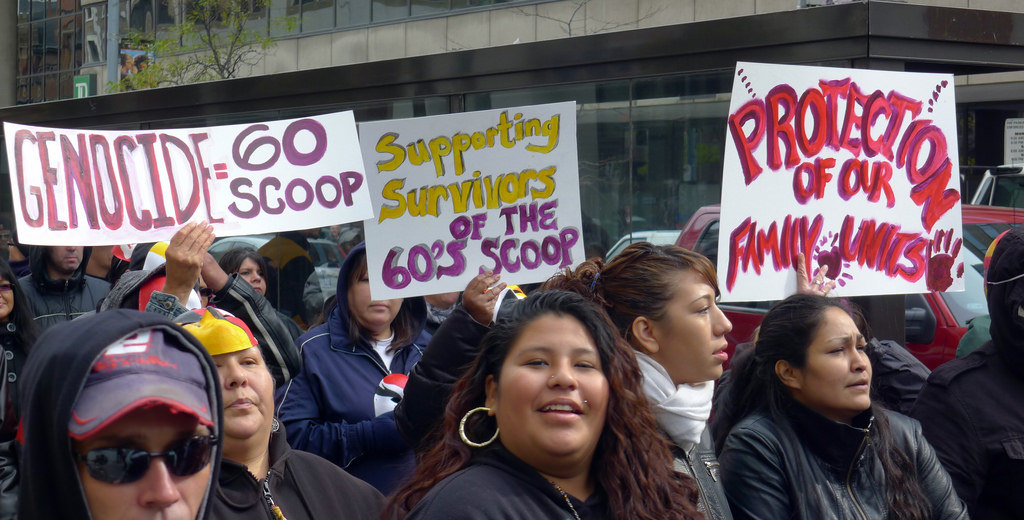
INDIGENOUS PEOPLES
The Sixties Scoop
As residential schools closed, thousands of Indigenous children were taken from their families by provincial and federal social workers and placed in foster or adoption homes. Often, these homes were non-Indigenous. Some children were even placed outside of Canada. (See also Sixties Scoop.)
JULY 01, 1960

INDIGENOUS PEOPLES
Right to Vote for Status Indians
Status Indians receive the right to vote in federal elections, no longer losing their status or treaty rights in the process. (See also Indigenous Suffrage in Canada.)
NOVEMBER 17, 1966

INDIGENOUS PEOPLES
Coroner’s Inquest Into Chanie Wenjack’s Death
A coroner’s inquest into Chanie Wenjack’s death is held. The all-White jury finds that residential schools cause tremendous emotional and psychological problems. They recommend that “A study be made of the present Indian education & philosophy. Is it right?”
JANUARY 01, 1968
POLITICAL ORGANIZATION AND ACTIVISM
Voice of Alberta Native Women's Society Founded
The Voice of Alberta Native Women's Society (VANWS) was founded by Indigenous activists, including Métis war veteran Bertha Clark Jones, to advocate on behalf of Status and Non-Status women in the years before Bill C-31 made it possible for those who had lost their status in marriage to regain it. VANWS would evolve into the Native Women's Association of Canada, which has been active since 1974.
JANUARY 01, 1969

INDIGENOUS PEOPLES
White Paper Published
A federal White Paper on Indian Affairs proposes abolishing the Indian Act, Indian status, and reserves, and transferring responsibility for Indigenous affairs to the provinces. In response, Cree chief Harold Cardinal writes the Red Paper, calling for recognition of Indigenous peoples as “Citizens Plus.” The government later withdraws the proposal after considerable opposition from Indigenous organizations.
JANUARY 01, 1969
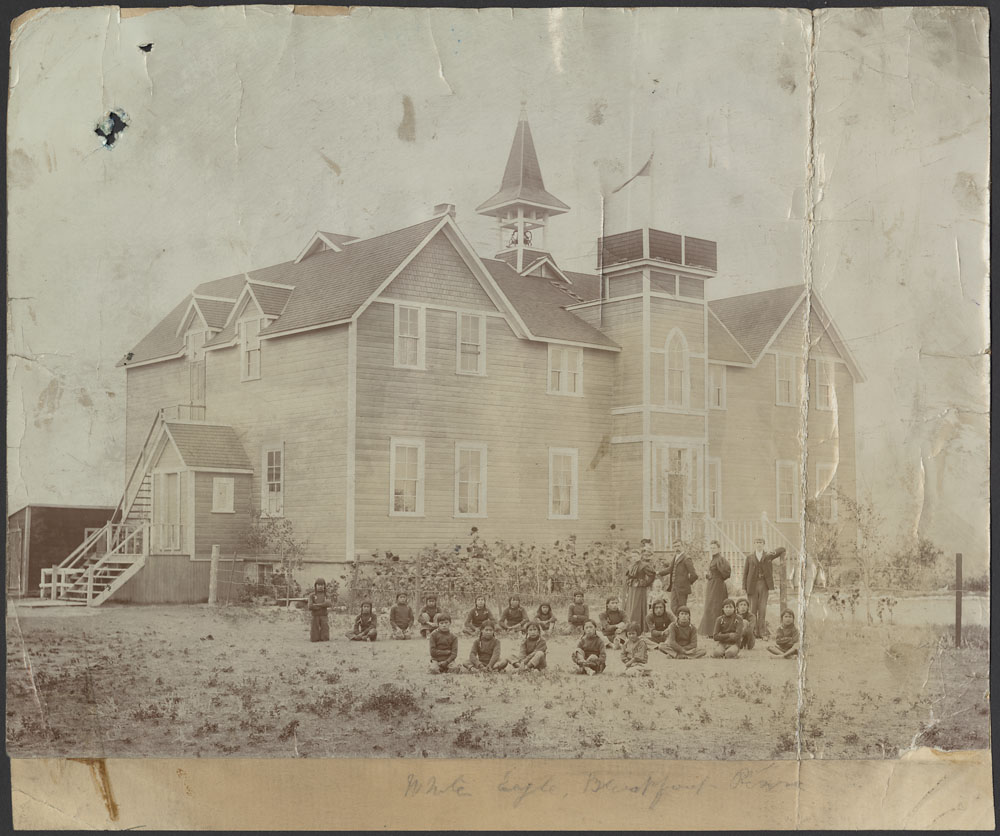
INDIGENOUS PEOPLES
Authority for Residential Schools Transferred to Government
The Canadian government takes over responsibility for the remaining residential schools from the churches.
JANUARY 01, 1970
INUIT
Inuit Territory Discussions Begin
Eastern Arctic Inuit of the Northwest Territories begin discussions about forming an Inuit territory.
JANUARY 01, 1971
INUIT
Inuit Tapiriit Kanatami is Formed
The Inuit Tapirisat of Canada, renamed Inuit Tapiriit Kanatami in 2001, is formed as a national organization advocating for self- government, social, economic, environmental, health, and political welfare of Inuit in Canada, and preservation of language and history.
JANUARY 01, 1973
LAW
Supreme Court Acknowledges Indigenous Land Titles
The Supreme Court of Canada agrees that Indigenous peoples held title to land before European colonization, that this title existed in law, and that it continues unless specifically extinguished. Named for Nisga’a chief Frank Calder, the Calder Case forces the government to adopt new policies to negotiate land claims with Indigenous peoples not covered by treaties.
FEBRUARY 14, 1973

INDIGENOUS PEOPLES
Yukon Land Claims
The federal government established a committee to negotiate land claims in the Yukon.
MARCH 18, 1973

INDIGENOUS PEOPLES
First Reserve in NWT
The first First Nations reserve in the Northwest Territories was created at Hay River.
SEPTEMBER 07, 1973
INDIGENOUS PEOPLES
NWT Court Allows Land Claim
The Northwest Territories Supreme Court allowed the Indian Brotherhood of the NWT to file a land claim for one-third of the NWT.
JANUARY 01, 1974

POLITICAL ORGANIZATION AND ACTIVISM
Native Women's Association of Canada Founded
The Native Women's Association of Canada (NWAC) was founded by Indigenous women and their allies, including non-Indigenous feminists active in the women’s movement. Members concerned themselves with the preservation and continuation of Indigenous culture on a local level, while focusing nationally on addressing the inequity in status conditions for women under the Indian Act. NWAC's first president was Métis war veteran and activist Bertha Clark Jones.
JULY 02, 1974
INDIGENOUS PEOPLES
Ralph Steinhauer Appointed Lieutenant-Governor
Ralph Steinhauer was appointed lieutenant-governor of Alberta, the first Indigenous person to hold vice-regal office in Canada.
JANUARY 01, 1976
INUIT
Greenpeace Anti-Sealing Campaign
An anti-sealing campaign led by Greenpeace attacks Inuit hunting practices, economically devastating Inuit communities for years. Greenpeace publicly expresses regret in 2014.
APRIL 05, 1977
INUIT
First Inuit to Enter Parliament
Willie Adams was appointed to the Senate for the Northwest Territories, the first Inuit person to hold a seat in Parliament.
AUGUST 14, 1978
INDIGENOUS PEOPLES
Dene Nation
The Indian Brotherhood of the Northwest Territories became the Dene Nation during the 8th Dene National Assembly held in Fort Norman, NT.
DECEMBER 23, 1978

INDIGENOUS PEOPLES
Bryan Trottier Sets Record for Most Points in a Period
Métis hockey player Bryan Trottier set an NHL record when he scored four goals and two assists in the second period of a game — the most points in one period in NHL history. He later won four Stanley Cups with the New York Islanders, two with the Pittsburgh Penguins and one as an assistant coach with the Colorado Avalanche. In 2001, the Islanders retired his No. 19.
JANUARY 01, 1979
INDIGENOUS PEOPLES
28 Residential Schools Remain
Thousands of Indigenous students are enrolled at the 28 residential schools that were running in Canada at the time.
JANUARY 01, 1980
POLITICAL ORGANIZATION AND ACTIVISM
Standoffs Occur On Disputed Lands
Several politically charged standoffs occur on disputed lands. More than 800 people are arrested during the “War in the Woods” when Tla-o-qui-aht and environmentalists fight to protect ancient forests from loggers in Clayoquot Sound, British Columbia. The Oka Crisis sees Mohawk activists clash with Québec provincial police for 78 days. Tensions over the Kettle and Stony Point First Nation occupation at Ipperwash Provincial Park contribute to protestor Dudley George’s death at the hands of an Ontario Provincial Police officer.
NOVEMBER 24, 1980
POLITICAL ORGANIZATION AND ACTIVISM
"Constitution Express" Begins
Activists travel by train from Vancouver to Ottawa aboard the “Constitution Express” to raise awareness about the lack of recognition of Indigenous rights in the proposed Canadian constitution.
APRIL 01, 1982
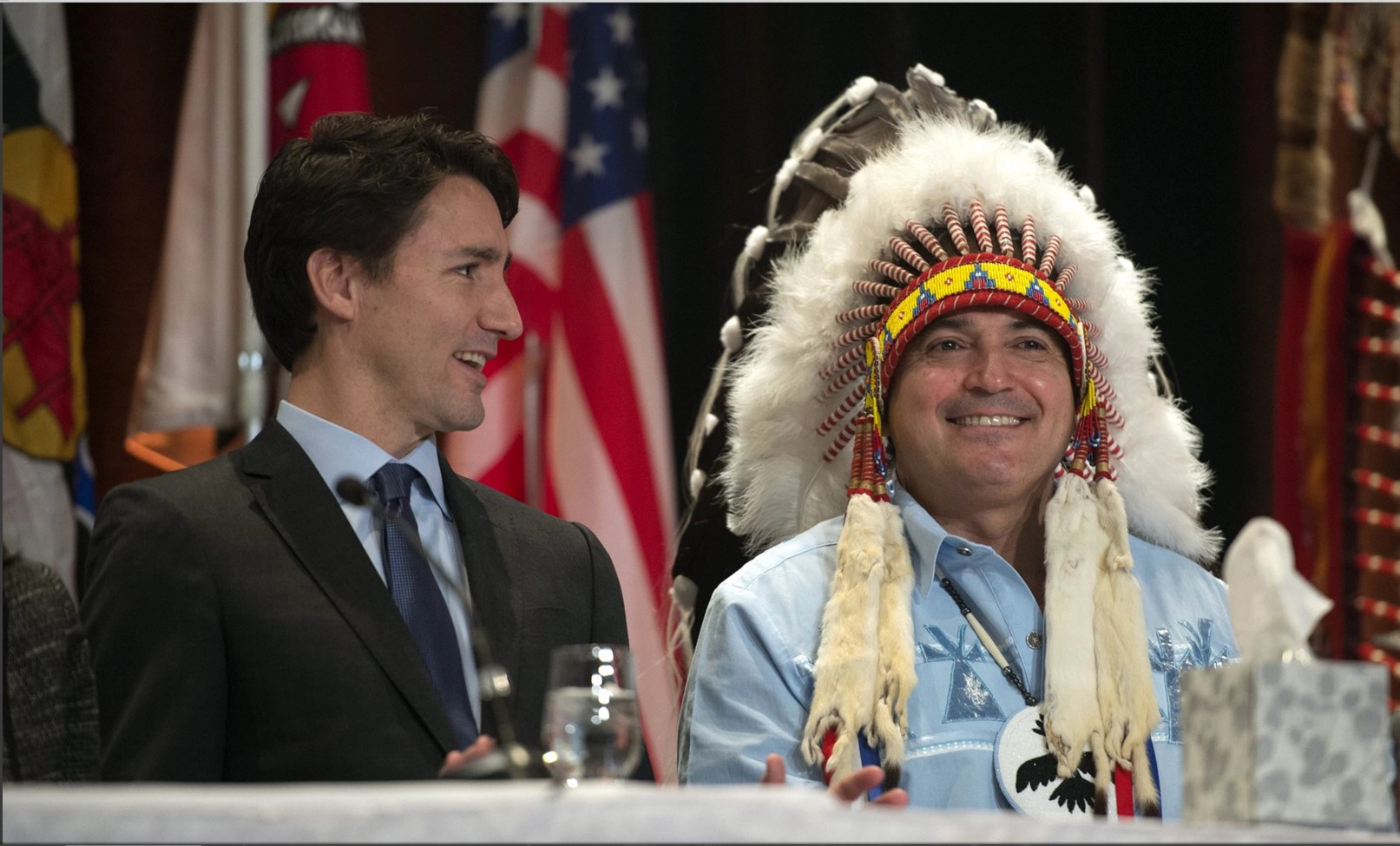
INDIGENOUS PEOPLES POLITICAL ORGANIZATION AND ACTIVISM
Assembly of First Nations is Formed
The Assembly of First Nations is formed out of the National Indian Brotherhood to promote the interests of First Nations in the realm of self-government, respect for treaty rights, education, health, land, and resources.
APRIL 17, 1982
POLITICAL ORGANIZATION AND ACTIVISM
Canadian Constitution is Patriated
The Canadian Constitution is patriated, and thanks to the advocacy of Indigenous peoples, Section 35 recognizes and affirms Aboriginal title and treaty rights. Later, Section 37 is amended, obligating the federal and provincial governments to consult with Indigenous peoples on outstanding issues. (See also Duty to Consult.)
MAY 28, 1983

INUIT
Death of Pitseolak Ashoona
Pitseolak Ashoona, Inuk graphic artist known for her lively prints showing "the things we did long ago," died at Cape Dorset, NWT (now Nunavut).
JUNE 05, 1984
SELF-GOVERNMENT
Inuvialuit Final Agreement Signed
The Inuvialuit and the federal government sign the Inuvialuit Final Agreement, a massive Western Arctic land claim.
APRIL 01, 1985
LAW
Indian Act Amendment to Restore Status (1985)
Bill C-31 amends the Indian Act to address gender discrimination in the Act. The Act no longer requires women to follow their husbands into or out of status. Women who “married out” could apply for the reinstatement of status rights. The work of First Nations women like Jeannette Corbiere Lavell and Sandra Lovelace Nicholas helped make change a reality. However, Bill C-31 limited the ability to transfer status to one’s children. The bill created new categories of Status Indian registration – 6(1) and 6(2) – and stipulated that status cannot be transferred if one parent is registered under section 6(2). In what is known as the “Second-Generation Cut-Off rule,” children would no longer be eligible for status after two generations of intermarriage with non-status partners. (See also Women and the Indian Act.)
JUNE 23, 1990

POLITICAL ORGANIZATION AND ACTIVISM
Meech Lake Accord Collapses
The Meech Lake Accord collapsed after the self-imposed deadline passed. The collapse owed much to Premier Clyde Wells' blockage in Newfoundland and failure to pass in Manitoba thanks to MLA Elijah Harper. It led to further constitutional wrangles and the renewal of the separatist movement in Québec.
JULY 11, 1990
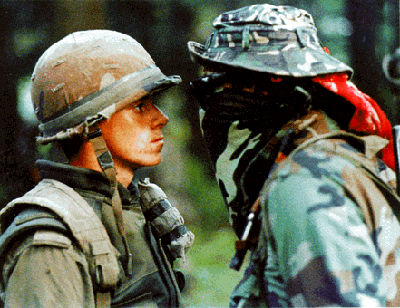
INDIGENOUS PEOPLES
Oka Standoff
A standoff began at Oka, Québec, when police attempted to storm a barricade erected by the Mohawk to block the expansion of a golf course onto land claimed by the Mohawk. The protesters surrendered to soldiers on September 26, after a 2-month-long siege.
AUGUST 17, 1990
INDIGENOUS PEOPLES
Canadian Forces Called in at Oka
Québec premier Robert Bourassa asked that the Canadian Forces replace the Sûreté du Québec (SQ) to resolve the Oka Crisis, a standoff by the Mohawk of the Kanesatake Reserve who had set up a blockade to protest the expansion of a golf course across land they claimed. Corporal Marcel Lemay, of the SQ, was killed on July 11 when the SQ stormed the blockade. The standoff ended peaceably 78 days after it began.
OCTOBER 30, 1990

INDIGENOUS PEOPLES
Phil Fontaine’s Testimony of Abuse at Residential Schools
Phil Fontaine, Head of the Assembly of Manitoba Chiefs, speaks publicly of the abuse he suffered at Fort Alexander Residential School. He calls for a public inquiry into the schools, which the federal government initiates in 1991.
MARCH 08, 1991
INDIGENOUS PEOPLES
Gitksan Court Case
In Delgamuukw et al v The Queen, the BC Supreme Court ruled that, according to treaties, the Gitksan do not have Aboriginal title to the land, but they do have the right to use it for subsistence.
JUNE 27, 1991
INDIGENOUS PEOPLES
Spicer Commission Report
The Spicer Commission recommended that the government foster a sense of country, that Québec be recognized as a unique province, that there be a prompt settlement of Indigenous land claims and that the Senate be reformed or abolished.
AUGUST 26, 1991
INDIGENOUS PEOPLES
Royal Commission on Aboriginal Peoples Initiated
In the wake of the Oka Crisis, Prime Minister Brian Mulroney initiates the Royal Commission on Aboriginal Peoples, with a mandate to study the evolution of the relationship between Indigenous peoples, the Government of Canada and Canadian society as a whole.
NOVEMBER 12, 1992
INUIT SELF-GOVERNMENT
Inuit Endorse Nunavut
The Inuit endorsed the creation of Nunavut, a semi-autonomous territory, in a referendum.
MAY 25, 1993
INUIT SELF-GOVERNMENT
Nunavut Land Claims Agreement Signed
Inuit and the governments of the Northwest Territories and Canada sign the Nunavut Land Claims Agreement, the largest in Canada’s history. A new territory, Nunavut, is created from the central and eastern portions of the Northwest Territories in 1999.
JUNE 06, 1995
INDIGENOUS PEOPLES
Douglas Lake Ranch Blockade
Members of the Upper Nicola First Nations Band agreed to end a 2-week blockade of the Douglas Lake Ranch in exchange for talks with the BC government over fishing rights.
AUGUST 18, 1995
INDIGENOUS PEOPLES
Gustafsen Lake Standoff Begins
A tense standoff between RCMP and armed Ts'peten Defenders at Gustafsen Lake, BC, began when Ts’peten Defenders fired at Emergency Response Team officers of the RCMP. Indigenous occupiers believed that the privately-owned ranch land on which they made their stand was a sacred place and part of a larger tract of unceded Shuswap territory. (See also Gustafsen Lake Standoff.)
SEPTEMBER 17, 1995
INDIGENOUS PEOPLES
Gustafsen Lake Standoff Ends
A tense standoff between RCMP and armed Ts'peten Defenders at Gustafsen Lake, British Columbia, ended. Indigenous occupiers believed that the privately-owned ranch land on which they made their stand was a sacred place and part of a larger tract of unceded Shuswap territory. (See also Gustafsen Lake Standoff.)
OCTOBER 24, 1995
INDIGENOUS PEOPLES
James Bay Cree Referendum
The James Bay Cree held a referendum to decide if their territory should remain a part of Canada should Québec vote to separate in its own forthcoming referendum. With a voter turnout of 77 per cent, 96.3 per cent voted in favour of staying with Canada. The vote was a political statement to the Government of Québec, asserting sovereignty over traditional Cree lands that had been appropriated without consent in 1898 and 1912, and formalizing opposition to Québec separatism.
JANUARY 01, 1996
INDIGENOUS PEOPLES
Last Federally Operated Residential School Closes
The last federally-run facility, Gordon’s Residential School in Punnichy, Saskatchewan, closes.
FEBRUARY 15, 1996
INDIGENOUS PEOPLES SELF-GOVERNMENT
Nisga'a Land Claim Agreement
Federal and provincial officials signed an agreement of land claims with the Nishga'a in northwestern British Columbia. The Final Agreement calls for cash payments to the Nisga'a of approximately $190 million over a period of years, and recognizes the communal ownership and self-governance of about 2,000 km2 of Nisga’a lands in the Nass River Valley.
FEBRUARY 23, 1996
INDIGENOUS PEOPLES
Bridging the Cultural Gap
The preliminary report of the royal commission into Indigenous affairs recommended that First Nations should be able to set up their own justice systems, appropriate to their own cultures.
NOVEMBER 21, 1996
INDIGENOUS PEOPLES
Final Report of the Royal Commission on Aboriginal Peoples
The 1996 report of the Royal Commission on Aboriginal Peoples stated that many of the Indian Act’s measures were oppressive, and noted that “Recognition as 'Indian' in Canadian law often had nothing to do with whether a person was actually of Indian ancestry.”
FEBRUARY 10, 1997
ARCHEOLOGICAL DISCOVERIES
Revised Dating of Americas
A team of scientists announced that the dating of early human remains in Chile showed that human ancestors lived in the Americas 1300 years prior to previous estimates.
APRIL 23, 1999
INDIGENOUS PEOPLES
Court Rules on Sentencing of Indigenous People
The Supreme Court of Canada ruled that the lower courts should apply traditional disciplinary practices when sentencing Indigenous persons found guilty of criminal offences.
MAY 20, 1999
INDIGENOUS PEOPLES
Off-Reserve Voting Rights
The Supreme Court of Canada ruled unanimously to open Indigenous band elections to off-reserve band members, stating that excluding them violated the Canadian Charter of Rights and Freedoms.
SEPTEMBER 17, 1999
INDIGENOUS PEOPLES
Mi'kmaq Fishing Rights Upheld
The Supreme Court of Canada ruled that treaties from the 1760s guaranteed Mi'kmaq rights to fish, hunt and log year round. The ruling sparked controversy, as the Mi'kmaq began to fish lobster out of season. Angry non-Indigenous fishermen destroyed lobster traps and other equipment, sunk a boat and carried out an armed blockade of Yarmouth Harbour, NS. The conflict ended when an agreement was reached that allowed the Mi’kmaq to fish for subsistence only.
OCTOBER 15, 1999
ARCHEOLOGICAL DISCOVERIES
Kennewick Man
A US scientific panel concluded that the bones of a skeleton found in Washington State bore more resemblance to Polynesians than to Indigenous people in North America, challenging the view that the first humans came to North America from Siberia.
NOVEMBER 17, 1999
INDIGENOUS PEOPLES
Mi'kmaq Rights Clarified
The Supreme Court of Canada clarified its earlier ruling (September 17) regarding Mi'kmaq (Micmac) fishing rights, stating that the ruling had been misinterpreted. It stated that the ruling applied did not guarantee open season on fishing.
DECEMBER 13, 1999
INDIGENOUS PEOPLES SELF-GOVERNMENT
Nisga'a Treaty Approved
The House of Commons voted 217-48 in favour of a bill that would give the Nisga'a of northwest BC the right to self-government. The band received 2000 sq km of land and $253 million. In return they agreed to pay taxes and relinquish future claims.
APRIL 13, 2000
INDIGENOUS PEOPLES SELF-GOVERNMENT
Nisga'a Treaty
The Nisga'a Treaty was given royal assent by Governor General Adrienne Clarkson.
MAY 11, 2000
INDIGENOUS PEOPLES SELF-GOVERNMENT
Nisga'a Final Agreement
The Nisga'a Final Agreement, recognizing Nisga'a lands and self-government, went into effect.
MARCH 10, 2001
INDIGENOUS PEOPLES
Nuu-chah-nulth Agree to Treaty
The Nuu-chah-nulth tribal council, the largest Indigenous group in British Columbia, agreed to a treaty with the provincial and federal governments, giving it more autonomy over its territories on Vancouver and Meares islands and a large one-time payment.
OCTOBER 04, 2003
INDIGENOUS PEOPLES
Mohawks Reject Casino
For the second time in 10 years, the Mohawks of Kahnawake rejected by referendum the proposal to build a casino on the reserve.
NOVEMBER 24, 2005
INDIGENOUS PEOPLES
Kelowna Accord
The Kelowna Accord follows 18 months of consultation among federal, provincial, territorial, and Indigenous leaders on health, education, social, and economic improvements for Indigenous peoples. While 5 billion dollars is promised, no formal agreement on how to dispense the money is reached. A federal election is called, and the Accord is not implemented by the new government.
DECEMBER 01, 2006
INUIT
The Nunavik Inuit Land Claims Agreement Comes Into Effect
The Nunavik Inuit Land Claims Agreement comes into effect, addressing ownership of land and resources in James Bay, Hudson Bay, Hudson Strait, and Ungava Bay, as well as part of northern Labrador.
SEPTEMBER 01, 2007
INDIGENOUS PEOPLES
Indian Residential Schools Settlement Agreement Comes into Effect
The Indian Residential Schools Settlement Agreement provides compensation to Survivors, including the Common Experience Payment, which is based on the number of years they attended residential school. Claims of sexual and physical abuse are assessed through an independent process. The Agreement focuses on funding and supporting Indigenous health and healing services and also establishes funds for the Truth and Reconciliation Commission (TRC).
JANUARY 01, 2008
INDIGENOUS PEOPLES
Indigenous and Northern Affairs Canada Formally Acknowledges Crown’s “Duty to Consult" Indigenous Peoples
Indigenous and Northern Affairs Canada formally acknowledges Supreme Court rulings on the Crown’s “duty to consult” and, if appropriate, accommodate when the Crown considers initiating activities or decisions – often dealing with natural resource extraction – that might impact Indigenous peoples’ treaty rights.
JUNE 01, 2008
RECONCILIATION
Truth and Reconciliation Commission of Canada is Established
The Canadian government authorizes the Truth and Reconciliation Commission of Canada to document the truth of Survivors, families and communities and inform all Canadians about what happened in residential schools. It is funded by the Indian Residential School Settlement Agreement.
JUNE 11, 2008
INDIGENOUS PEOPLES
Formal Apology to Former Residential Schools Students
Prime Minister Stephen Harper, on behalf of the Government of Canada, delivers a formal apology in the House of Commons to former students, their families, and communities for Canada's role in the operation of residential schools. Provincial and territorial apologies follow in the years ahead.
APRIL 03, 2009
INDIGENOUS PEOPLES
Tsawwassen Treaty
The Tsawwassen First Nation treaty in British Columbia legally took effect, providing Indigenous members of the Lower Mainland region financial support to help increase the economic vitality of the area. It is was the first urban treaty ever negotiated in British Columbia.
JUNE 16, 2010
RECONCILIATION
First National Truth and Reconciliation Event
The Truth and Reconciliation Commission of Canada hosts its first national event, in Winnipeg, MB. It explores the history of the residential school system, the experience of former students and their families and the impact such institutions had on Indigenous peoples in Canada. Over the next five years, six more events follow in cities around the country, with a national closing ceremony in Ottawa.
NOVEMBER 01, 2012
POLITICAL ORGANIZATION AND ACTIVISM
Idle No More Movement Begins
Four women start Idle No More as a national (and online) movement of marches and teach-ins, raising awareness of Indigenous rights and advocating for self-determination.
JANUARY 08, 2013

INUIT
Kenojuak Ashevak Dies
Kenojuak Ashevak, a Nunavummiuq artist whose work became an icon of the Canadian Arctic, died at age 85 in her home at Cape Dorset, Nunavut.
MAY 01, 2013

INDIGENOUS PEOPLES POLITICAL ORGANIZATION AND ACTIVISM
First Orange Shirt Day
Residential School survivors and their families gathered at Williams Lake, BC, to honour the survivors. Phyllis Webstad, a Northern Secwepemc (Shuswap) woman, spoke of her first day at Residential School, when she was stripped of her new orange shirt. From this came the idea to adopt the orange shirt as a symbol of remembrance, teaching and healing.
AUGUST 15, 2013

INDIGENOUS PEOPLES
First Totem Pole Erected in Gwaii Haanas in 130 Years
The Gwaii Haanas Legacy Pole, carved by a team of Haida craftsmen led by Jaalen Edenshaw, was erected in Gwaii Haanas National Park Reserve and Haida Heritage Site on Haida Gwaii. The totem pole was the first erected on Gwaii Haanas in 130 years. It marked the site of the 1985 standoff over a proposed clear-cut logging operation that led, eight years later, to the 1993 South Moresby Agreement. That agreement created Gwaii Haanas, an ecological and heritage partnership between the Haida Nation and Parks Canada.
JANUARY 10, 2014
SELF-GOVERNMENT
First Indigenous Constitution in Ontario
Members of the Nipissing First Nation voted in favour of adopting their own constitution, or Gichi-Naaknigewin, believed to be the first such document among First Nations communities in Ontario. Its purpose is to allow the nation to define its membership and create laws. Legal experts say it is unclear, however, whether this constitution will run up against Canadian laws such as the Indian Act, which it is designed to replace.
MARCH 27, 2014
RECONCILIATION
Final National Truth and Reconciliation Event
The seventh and final national event of the Truth and Reconciliation Commission of Canada (TRC) takes place over three days in Edmonton, Alberta inviting individuals, families, and communities to share their experiences at residential schools.
MAY 16, 2014
RECONCILIATION
National Operational Review on Missing and Murdered Aboriginal Women
The RCMP released the National Operational Review on Missing and Murdered Aboriginal Women. Research identified 1,181 missing and murdered Indigenous women and girls in Canadian police databases: 164 missing (dating back to 1952) and 1,017 murdered (between 1980 and 2012).
MAY 26, 2014
INDIGENOUS PEOPLES
Residential School Monument in Winnipeg
A monument to honour the Survivors of residential schools was unveiled in Winnipeg, Manitoba, at the Peace Garden outside of the Canadian Museum for Human Rights.
JUNE 02, 2015
RECONCILIATION
Summary Report of the Truth and Reconciliation Commission Released
The Truth and Reconciliation Commission releases the summary of its final report on the residential school system and the experiences of survivors, characterizing Canada’s treatment of Indigenous peoples as “cultural genocide.” The report includes 94 calls to action aimed at redressing the legacy of residential schools and assisting in the process of reconciliation.
JULY 25, 2015
INDIGENOUS PEOPLES
First Official Indigenous Pride Event in Canada
An LGBTQ pride celebration — believed to be the first on-reserve event of its kind in Canada — was held at the Six Nations of the Grand River First Nation in Ontario. Remarks from local leaders including Chief Ava Hill honoured the community's two-spirited people.
SEPTEMBER 08, 2015
INDIGENOUS PEOPLES
Death of Basil Johnston
Anishinaabe author, storyteller and educator Basil Johnston died in Wiarton, Ontario, at age 86. A survivor of the residential school system, Johnston published his first book in his 40s and went on to publish over 20 more — many of them devoted to the history, stories and language of the Anishinaabe people. Five of his books were written in the Anishinaabemowin language. Johnston, who was a member of the Chippewas of Nawash Unceded First Nation, had a profound impact on a younger generation of First Nations writers, including Tomson Highway, Drew Hayden Taylor and Joseph Boyden.
OCTOBER 04, 2015
RECONCILIATION
REDress Project Calls for Donations
The REDress Project, an art installation commemorating Canada’s missing and murdered Indigenous women, asked for the donation of red dresses, and for Canadians to hang their own. Métis artist Jaime Black initiated the project, which has displayed hundreds of red dresses in public spaces such as the Canadian Museum of Human Rights.
NOVEMBER 03, 2015
RECONCILIATION
National Centre for Truth and Reconciliation Opens
The National Centre for Truth and Reconciliation, a permanent archive of materials, documents and testimonies on residential schools gathered during the Truth and Reconciliation Commission,opens at the University of Manitoba in Winnipeg.
DECEMBER 15, 2015
RECONCILIATION
Final Report of the Truth and Reconciliation Commission Released
The Truth and Reconciliation Commission releases its final report, Honouring the Truth, Reconciling for the Future. Prime Minister Justin Trudeau, who attended the ceremonial release of the report,commits his government to implementing all of the 94 recommendations set out in the June 2015 summary report.
FEBRUARY 11, 2016
RECONCILIATION
Last Fluent Nuchatlaht Speaker Dies
Alban Michael, the last fluent speaker of the Nuchatlaht language, died in Campbell River, British Columbia, at age 89. Raised on Nootka Island, Michael spoke only Nuchatlaht until he was forced to learn English at a residential school in Tofino as a child. He nevertheless maintained his fluency in Nuchatlaht so that he could speak with his mother, who did not speak English.
APRIL 14, 2016

INDIGENOUS PEOPLES
Supreme Court Ruling Changes Legal Definition of “Indian”
The Supreme Court of Canada rules unanimously that the legal definition of “Indian” — as laid out in the Constitution — includes Métis and non-status Indians. While this ruling did not grant status to Métis and non-status Indians, it helped facilitate possible negotiations over traditional land rights, access to education and health programs, and other government services.
MAY 10, 2016

INDIGENOUS PEOPLES
Canada Supports UN Declaration on Indigenous Rights
Indigenous Affairs minister Carolyn Bennett announced Canada’s full support of the United Nations Declaration on the Rights of Indigenous Peoples. The Conservative government under Stephen Harper had endorsed the declaration in 2010, but with qualifications that gave Canada “objector” status at the UN with respect to the document. Bennett's announcement removed this status. The declaration recognizes a wide range of Indigenous rights, from basic human rights to land, language and self-determination rights.
MAY 30, 2016

INDIGENOUS PEOPLES RECONCILIATION
Premier Wynne Issues Residential Schools Apology
In response to the recommendations of the Truth and Reconciliation Commission, Ontario premier Kathleen Wynne formally apologizes on behalf of the provincial government for the abuses committed against Indigenous peoples in the residential school system, as well as for the oppressive policies and practices supported by past Ontario governments. The province announces a $250-million, three-year investment in several initiatives aimed at reconciliation.
SEPTEMBER 19, 2016

INUIT
Death of Annie Pootoogook
The body of artist Annie Pootoogook, 47, was found in the Rideau River in Ottawa, Ontario. An internationally exhibited winner of the Sobey Art Award, Pootoogook came from a family of accomplished Inuit artists. She moved from Cape Dorset, Nunavut, to Ottawa in 2007, after achieving international recognition.
Days after her death, Ottawa police officer Chris Hrnchiar wrote remarks widely condemned as racist in the comments section of an article on Pootoogook’s death in the Ottawa Citizen. The incident resulted in an internal investigation and, ultimately, a three-month demotion for Hrnchiar, who pleaded guilty to two charges under the Police Services Act.
Ottawa police were still investigating suspicious elements of the case several months after Pootoogook’s death.
FEBRUARY 14, 2017

LAW RECONCILIATION
First Victory of a Sixties Scoop Lawsuit
Ontario Superior Court judge Edward Belobaba ruled in favour of Sixties Scoop victims, finding that the federal government did not take adequate steps to protect the cultural identity of on-reserve children taken away from their homes. This was the first victory of a Sixties Scoop lawsuit in Canada.
MARCH 10, 2017

FIRST NATIONS
Death of Richard Wagamese
Anishinaabe (Ojibwa) novelist and journalist Richard Wagamese died in Kamloops, British Columbia, at the age of 61. A member of the Wabaseemoong Independent Nations, Wagamese was taken from his family as a young child, during the Sixties Scoop, and only reunited with them as an adult. The experience informed his exploration of his Anishinaabe roots in his writing. He published more than a dozen works in his lifetime, in addition to penning a popular Indigenous affairs column and working in broadcasting.
JUNE 21, 2017
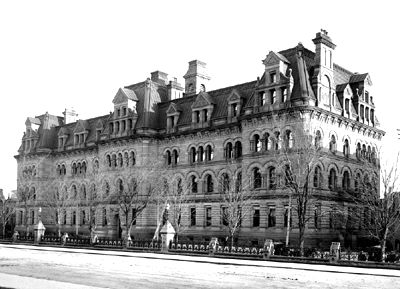
RECONCILIATION
Trudeau Announces Renaming of Langevin Block
On National Aboriginal Day 2017, Prime Minister Justin Trudeau announced that, in the spirit of reconciliation, Parliament’s Langevin Block would be renamed Office of the Prime Minister and Privy Council. Sir Hector-Louis Langevin (after whom the building was named) played an important role in Confederation but was also one of the original architects of the residential schools system, which was designed to assimilate Indigenous children into Euro-Canadian culture.
JULY 26, 2017

LAW
Supreme Court Rules on Pipeline Projects
The Supreme Court of Canada ruled that Indigenous peoples do not have the power to veto resource development projects such as pipelines. It stated that while the government has a duty to consult with Indigenous communities, the National Energy Board (NEB) is the “final decision maker.” The Chippewas of the Thames First Nation had appealed the NEB’s approval of a modification to Enbridge’s Line 9 pipeline, which runs through traditional Chippewa territory near London, Ontario.
AUGUST 28, 2017
RECONCILIATION
Dissolution of INAC and introduction of two new ministries
Implementing a recommendation by the Royal Commission on Aboriginal Peoples (1996), the federal government dissolved Indigenous and Northern Affairs Canada (INAC) and replaced it with two new ministries: Crown-Indigenous Relations and Northern Affairs; and Indigenous Services. The government described this restructuring as a “next step” to abolishing the Indian Act.
SEPTEMBER 13, 2017
RECONCILIATION
Montréal Changes Coat of Arms and Announces Amherst Street Renaming
Montréal mayor Denis Coderre announced the addition of a white pine to the city’s coat of arms to recognize the contributions of Indigenous people over its history. The initiative was tied to the 10th anniversary of the United Nations Declaration on the Rights of Indigenous Peoples. Coderre also announced that Amherst Street — named after British general Jeffrey Amherst — would be renamed. Amherst supported the genocide of Indigenous peoples, including the spreading of epidemics by distributing smallpox-carrying blankets.
SEPTEMBER 20, 2017
RECONCILIATION
Sayisi Dene Reclaim Part of Traditional Territory
The Manitoba government signed an agreement to revert a portion of the Sayisi Dene’s traditional territory near Little Duck Lake into reserve land for the First Nation. In 1956, the Sayisi Dene were forcibly relocated from this land to the outskirts of Churchill, where they suffered years of extreme hardship.In August 2016, on the 60th anniversary of the forced relocation, Indigenous Affairs minister Carolyn Bennett issued a formal apology to survivors on behalf of the federal government.
OCTOBER 05, 2017

POLITICAL ORGANIZATION AND ACTIVISM
Energy East Pipeline Project Cancelled
TransCanada announced that it had cancelled plans to build the Energy East pipeline, which would have carried crude oil from Alberta and Saskatchewan to refineries in Québec and New Brunswick. From there, oil would have been exported to other countries. The company cited changing market conditions and delays in assessments carried out by the National Energy Board as reasons for its decision. The project’s supporters, including premiers Rachel Notley and Brad Wall, expressed disappointment and criticized the federal government’s approach to the review process. Energy East’s opponents, including municipalities in Québec and Indigenous communities along the proposed path of the pipeline, hailed it as a victory.
OCTOBER 06, 2017

LAW
Sixties Scoop Survivors Receive Settlement
The federal government announced a settlement of $800 million with Sixties Scoop survivors. The Sixties Scoop refers to the forced removal of Indigenous children from their homes and their subsequent adoption into predominantly non-Indigenous, middle-class families across Canada and the United States in the 1960s. Survivors of these federal and provincial government policies experienced lasting trauma as a result of their separation from their birth families, communities and cultures.
NOVEMBER 24, 2017
RECONCILIATION
Trudeau Issues Newfoundland and Labrador Residential Schools Apology
Prime Minister Justin Trudeau apologizes to the Survivors of residential schools in Newfoundland and Labrador who were excluded from Stephen Harper’s 2008 apology because residential schools there were not run by the federal government and were established before Newfoundland joined Confederation in 1949. Survivor Toby Obed, who was instrumental in the class-action lawsuit against the federal government, accepted Trudeau’s apology on behalf of his community. However, Gregory Rich, Innu Nation Grand Chief, refused Trudeau’s apology on behalf of the Innu Nation, saying it was too narrow.
JANUARY 01, 2018
ARCHEOLOGICAL DISCOVERIES
Toronto's oldest artifact trusted to the care of the city over 80 years after its discovery
An Indigenous arrowhead, estimated to be between 4,000 and 6,000 years old, has been trusted to the care of the city of Toronto by the woman who discovered it during a class trip to Fort York in 1935. Jeanne Carter discovered what is now considered the oldest artifact discovered on the present-day territory of the city of Toronto.
JANUARY 08, 2019
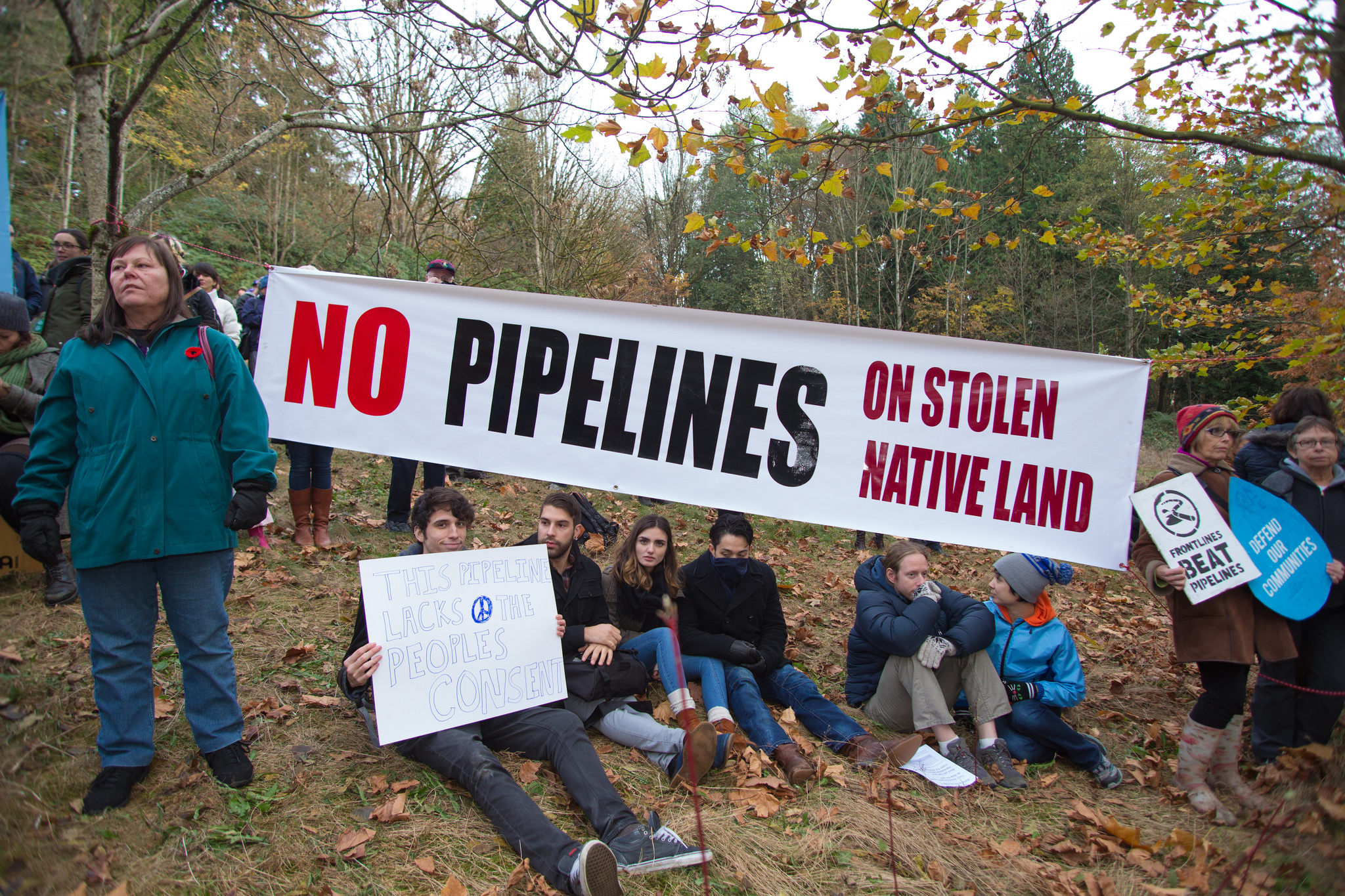
INDIGENOUS PEOPLES POLITICAL ORGANIZATION AND ACTIVISM
RCMP Arrest 14 People at BC Pipeline Protest
Enforcing a BC Supreme Court injunction that was passed in December, RCMP officers entered a roadblock south of Houston, BC, and arrested 14 members of the Wet'suwet'en Nation. The protestors had been preventing workers from Coastal GasLink, a subsidiary of TransCanada Corp., from entering the area on the grounds that they did not have the consent of hereditary leaders to build a pipeline carrying natural gas from Dawson Creek to Kitimat. The following day, protests were held in cities across Canada in a show of support for the Wet'suwet'en Nation.
FEBRUARY 05, 2019

INDIGENOUS PEOPLES
Federal Government Proposes Stat Holiday for Reconciliation
Bill C-369 would make September 30 a statutory holiday called “National Day for Truth and Reconciliation.” (See also Truth and Reconciliation Commission.) September 30 currently recognizes residential school survivors as “Orange Shirt Day.” The goal of the stat holiday would be to ensure that “public commemoration of the history and legacy of residential schools and other atrocities committed against First Nations, Inuit, and Métis peoples remains a vital component of the reconciliation process.” The bill requires approval from the House of Commons and Senate to become law. It would then need approval from the provinces and territories to be officially observed.
FEBRUARY 12, 2019

INDIGENOUS PEOPLES
Jody Wilson-Raybould Resigns from Cabinet Amid SNC-Lavalin Scandal
Jody Wilson-Raybould, who had been Justice Minister until a Cabinetshuffle on 14 January, resigned from Cabinet days after news broke that the Prime Minister’s Office allegedly pressured her to help Quebec constructionfirm SNC-Lavalin avoid facing criminal prosecution. In the wake of the news, Justin Trudeau’s principal secretary Gerald Butts resigned on 18 February and a federal hearing on the issue was held beginning on 20 February. In her testimony to the hearing on 27 February, Wilson-Raybould claimed that almost a dozen senior government officials made a “sustained effort” to convince her to drop charges against SNC-Lavalin. Trudeau disagreed with her recollection of events and claimed that he and his staff “always acted appropriately and professionally” on the matter.
JUNE 03, 2019
INDIGENOUS PEOPLES
Final Report of the National Inquiry into Missing and Murdered Indigenous Women and Girls Released
The final report of the National Inquiry into Missing and Murdered Indigenous Women and Girls reveals that persistent and deliberate human rights violations are the source of Canada’s staggering rates of violence against Indigenous women, girls and LGBTQ2S people. The report gives 231 calls for justice to governments, police forces and institutions.
JANUARY 15, 2020

POLITICAL ORGANIZATION AND ACTIVISM
Wet'suwet'en First Nation Protests Against Trans Mountain Pipeline
Environmental activists held protests on Vancouver Island and at the Toronto office of Deputy Prime Minister Chrystia Freeland, calling for the federal government to stop construction of the Coastal GasLink pipeline through the Wet'suwet'en First Nation territory in British Columbia. Coastal GasLink had obtained approval from the elected councils of 20 First Nations, but hereditary clan leaders refused to consent to the pipeline and demanded that it not proceed.
JULY 19, 2020
INDIGENOUS PEOPLES POLITICAL ORGANIZATION AND ACTIVISM
1492 Landback Lane Protest Begins
Members of Six Nations of the Grand River, located near Hamilton, Ontario, started what would become a months-long occupation of a residential housing project in nearby Caledonia, known as 1492 Land Back Lane. The Haudenosaunee asserted that the land on which these projects were built was never surrendered to the Crown. On 1 July 2021, the housing project was cancelled.
MAY 27, 2021
ARCHEOLOGICAL DISCOVERIES INDIGENOUS PEOPLES RECONCILIATION
Remains of 215 Children Found on Grounds of Kamloops Residential School
The unmarked graves of 215 children were confirmed through the use of ground penetrating radar on the grounds of the former Kamloops Indian Residential School — at one time the largest residential school in the country. Chief Rosanne Casimir of the Tk’emlups te Secwepemc First Nation called the finding an “unthinkable loss that was spoken about but never documented.”
JUNE 23, 2021
ARCHEOLOGICAL DISCOVERIES INDIGENOUS PEOPLES
Hundreds of Unmarked Graves Found at Saskatchewan Residential School
One month after the confirmation of 215 unmarked graves at a former residential school in Kamloops, BC, ground-penetrating radar revealed an estimated 751 graves at the site of the former Marieval Indian Residential School in Cowessess First Nation territory, about 150 km east of Regina. The radar search began on 1 June. The Marieval school was open from 1899 to 1997 and was administered by the Catholic Church until 1968.
JUNE 28, 2021
INDIGENOUS PEOPLES RECONCILIATION
BC Commits $12 Million to Help First Nations Search More Residential School Sites
The British Columbia government committed $12 million to help First Nations in the province search the grounds of former residential schools for more unmarked children’s graves. Some of the funds were also directed toward mental health supports. The province said it would work with the First Nations Health Authority (FNHA), Indigenous Services Canada, and Crown-Indigenous Relations and Northern Affairs Canada to ensure that the funds went to projects led by First Nations.
JULY 01, 2021

LAW
First South Asian Canadian to Sit on Supreme Court
Mahmud Jamal became the first racialized person and the first South Asian Canadian to serve as a justice on the Supreme Court of Canada. A former Fulbright scholar with a background in law and economics, Jamal worked as a litigator with the Toronto firm Osler, Hoskin & Harcourt LLP before becoming a judge with the Court of Appeal for Ontario.
JULY 01, 2021
INDIGENOUS PEOPLES POLITICAL ORGANIZATION AND ACTIVISM RECONCILIATION
Thousands Attend “Cancel Canada Day” Rally in Ottawa
The annual Canada Day celebrations on Parliament Hill were replaced this year by a “Cancel Canada Day” rally organized by Idle No More and the Anishinaabe nation. Thousands of people, many of them wearing orange shirts, marched from the offices of Indigenous Services Canada in Gatineau to Parliament Hill, where they gathered to “honour all of the lives lost to the Canadian state.” Flags on Parliament Hill flew at half-mast in honour of the hundreds of dead children that had been found on the sites of former residential schools weeks earlier.
JULY 12, 2021
ARCHEOLOGICAL DISCOVERIES
160+ Unmarked Children’s Graves Found at Another BC Residential School
Penelakut Tribe chief Joan Brown said in a statement that more than 160 “undocumented and unmarked” graves had been found on Penelakut Island, formerly Kuper Island, off the coast of Vancouver Island southeast of Nanaimo. The graves were found at the site of the Kuper Island Industrial School, a residential school run by the Catholic Church from 1890 to 1969 and by the federal government from 1969 until 1975.
JULY 26, 2021
INDIGENOUS PEOPLES
Mary Simon Becomes First Indigenous Person To Be Governor General
Inuk leader Mary Simon was formally installed as Canada’s 30th Governor General, making her the first Indigenous person to hold Canada’s viceregal position.
AUGUST 10, 2021
ARCHEOLOGICAL DISCOVERIES INDIGENOUS PEOPLES POLITICAL ORGANIZATION AND ACTIVISM
Ottawa to Spend $321 Million on Residential School Searches
The federal government announced a plan to provide $321 million in funding to Indigenous groups for residential school searches and other initiatives, including the creation of a national commemorative monument to the victims and survivors of residential schools.
SEPTEMBER 28, 2021
INDIGENOUS PEOPLES
Joyce Echaquan Livestreams Hospital Staff’s Refusal to Treat Her before She Dies
At a hospital in Joliette, Quebec, Joyce Echaquan, a 37-year-old Atikamekw woman and a mother of seven, died shortly after she livestreamed a nurse and an orderly refusing to tend to her as they made racist, derogatory comments about her. On 5 October, coroner Gehane Kamel reported that hospital staff failed to properly assess the heart palpitations Echaquan was experiencing and instead assumed she was suffering from opioid withdrawal. When Echaquan became distressed and agitated, hospital staff called her “theatrical” and strapped her to a bed. Kamel called the incident an “undeniable” example of systemic racism. A lawyer for Echaquan’s family planned to file a human rights complaint and a civil suit against the hospital.
SEPTEMBER 30, 2021
INDIGENOUS PEOPLES RECONCILIATION
First National Day for Truth and Reconciliation
Canada recognized the first National Day for Truth and Reconciliation as an annual statutory holiday. The creation of the holiday was one of 94 recommendations in the Truth and Reconciliation Commission’s final report, which was published in June 2015. The holiday was officially created with the passage of Bill C-5 on 3 June 2021, less than two weeks after the confirmation of 215 unmarked children’s graves at the site of a former residential school near Kamloops, BC. Prime Minister Justin Trudeau made headlines on the first National Day for Truth and Reconciliation after he spent the day on vacation in Tofino, BC, rather than participate in any official events.
DECEMBER 15, 2021
ARCHEOLOGICAL DISCOVERIES INDIGENOUS PEOPLES
Children Who Didn’t Come Home from Residential Schools Named Canadian Press Newsmaker of the Year
The Canadian Press named “children who didn’t come home from residential schools” as Canada’s Newsmaker of the Year. More than 1,000 unmarked graves on the sites of former residential schools across Western Canada had been confirmed since the first findings at the former Kamloops Indian Residential School were made public on 27 May.
No comments:
Post a Comment